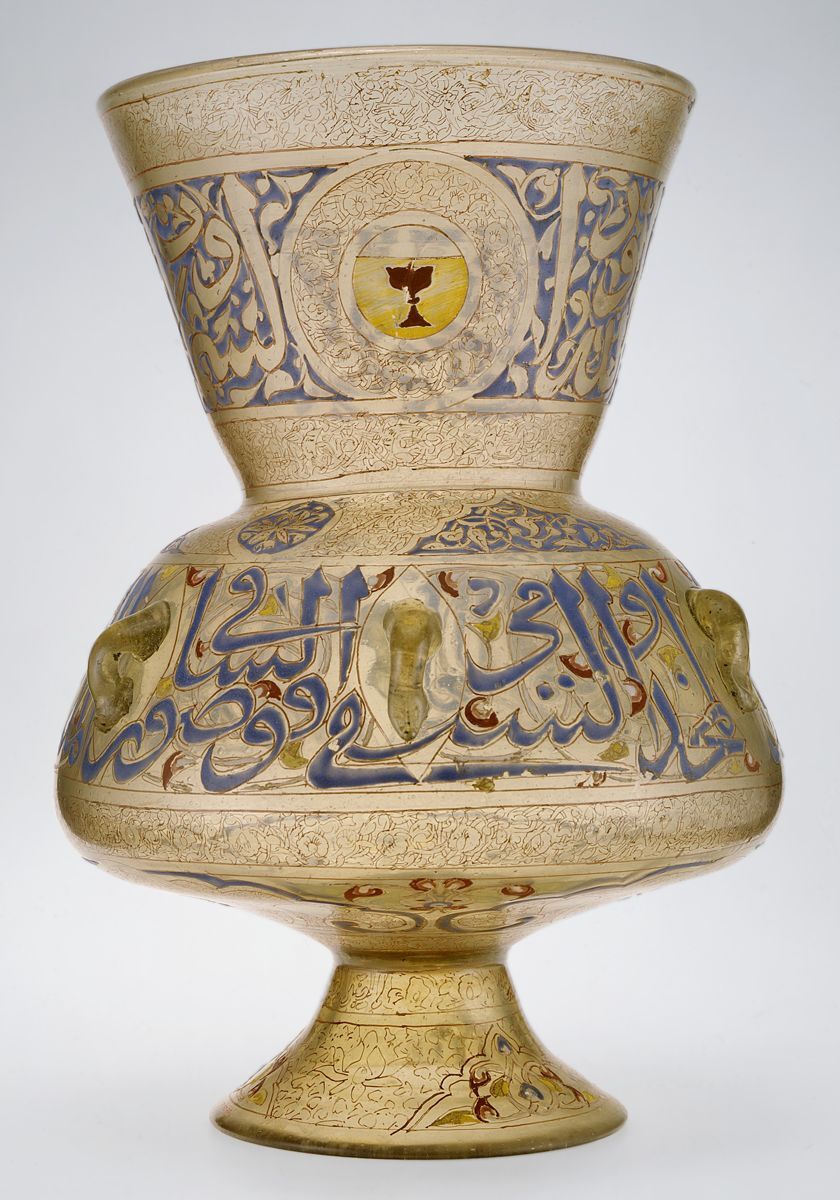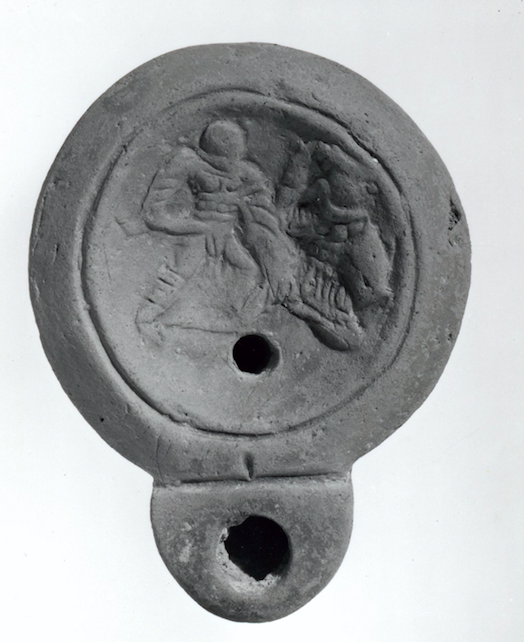Olive Oil Culture History III - Fuel for Lighting
15-04-2025
11:42

Photo; Egyptian enameled glass mosque lamp made for Amir Qawsun, circa 1329–1335, Dimensions; height: 35.9 cm, diameter 25.6 cm, diameter with handle 26.2 cm, inscription in Thuluth script (ornate Arabic script of the period) specific to the Mamluk period, source .
Olive oil has served as lamp oil for centuries, probably because it emits a bright light when burned and does not emit an unpleasant odor. However, in those periods of history, the use of olive oil for lighting purposes was actually an expensive and luxurious option, but it was a fuel that could be used in temples and the living spaces of the noble elite.
It has been documented that the best quality olive oil was used for lighting purposes in temples built for the sun god Ra in ancient Egypt. It is stated that by the time of the Ramses II Period (1191-1178 BC), the oil used to illuminate the palace was produced in olive groves grown around urban settlements.
David, the son/son-in-law of Saul, who likened himself to an olive tree in the Psalms section of the Torah, established olive groves to produce olive oil, which served as fuel for the six-branched candelabra used to light the temples, and assigned guards to the olive depots. After David, a musician and a competent administrator, centralized power by making Jerusalem the capital, his son Solomon, who took over the kingship from him between 970-930 BC, carved the doors and statuettes on the famous temple he had built in Jerusalem from olive wood.
In the Roman Empire, the most powerful and largest civilization in the Mediterranean basin, oil lamps that used olive oil as fuel were not only a means of illumination, but also an object that depicted the qualities and social class of their owner through the inscriptions and figures on them.
Olive oil has served as lamp oil for centuries, probably because it emits a bright light when burned and does not emit an unpleasant odor. However, in those periods of history, the use of olive oil for lighting purposes was actually an expensive and luxurious option, but it was a fuel that could be used in temples and the living spaces of the noble elite.
It has been documented that the best quality olive oil was used for lighting purposes in temples built for the sun god Ra in ancient Egypt. It is stated that by the time of the Ramses II Period (1191-1178 BC), the oil used to illuminate the palace was produced in olive groves grown around urban settlements.
David, the son/son-in-law of Saul, who likened himself to an olive tree in the Psalms section of the Torah, established olive groves to produce olive oil, which served as fuel for the six-branched candelabra used to light the temples, and assigned guards to the olive depots. After David, a musician and a competent administrator, centralized power by making Jerusalem the capital, his son Solomon, who took over the kingship from him between 970-930 BC, carved the doors and statuettes on the famous temple he had built in Jerusalem from olive wood.
In the Roman Empire, the most powerful and largest civilization in the Mediterranean basin, oil lamps that used olive oil as fuel were not only a means of illumination, but also an object that depicted the qualities and social class of their owner through the inscriptions and figures on them.

Photo; Ancient Oil Lamp, two female gladiator figures in the discus section, Sanctuary of Demeter, 2nd century AD, Ancient City of Knidos, Muğla.
The fuel used for lighting and blessing in churches was also olive oil, and the olive oil used for blessing was called “Prayer oil” and “Holy oil”. The oil that was sanctified with the ritual was kept in small bottles called “ampullae” made of silver, lead or earth. Smaller glass or silver ampullae were produced so that priests who went on a journey could carry the oil that was sanctified with the ritual in the church. It is possible to come across such storage objects in the treasury sections of old churches and in some modern churches.
Until gas lamps came into use, olive oil continued to be used as lighting fuel in oil canisters made of different materials, ranging from ground to underground.
Olive oil was used to illuminate the Masjid al-Haram in Mecca. Especially during the Mamluk period, glass mosque lamps with enamel decorations were made in large numbers. They were made in Egypt or Syria during the Mamluk period. They were made to order and presented as gifts to the Cairo mosques by the Mamluk sultans. The most famous of the mosque lamps in the Museum of Islamic Art is made of honey-colored glass.
The museums contain a large number of exquisitely crafted glass lamps, first manufactured in medieval Syria, but soon to be successfully imitated in workshops on the island of Murano in Venice. It is known that the Grand Vizier Sokollu Mehmed Pasha, who was assassinated in 1579, ordered nine hundred lamps for mosques in Venice, and even sent model drawings so that the manufacturers could understand what kind of lamp he was designing.
It is also known that olive oil was used to illuminate harbor lighthouses.
With the discovery of candles and the widespread use of petroleum products as fuel, the use of olive oil as a lighting fuel will come to an end.
Compiled by: Uğur Saraçoğlu, Physician, Olive and Olive Oil Producer (ugisaracoglu@yahoo.com.tr)
Source:
1. https://antiquities.bibalex.org/Collection/Detail.aspx?a=1000&collection=42&lang=en .
4. Deviz Trade and Ports in Western Anatolia in Antiquity, PhD Thesis, Hüsniye Esra Tufanoğlu, TC Istanbul University, Institute of Social Sciences, Istanbul, 2017.
8. Lighting tools in ancient times and Perge terracotta lamps, Şebnem Sedef Çokay,
Advisor; Prof. Dr. Haluk Abbasoğlu, Istanbul University, Institute of Social Sciences, Department of Archaeology, Classical Archaeology, 1996.
